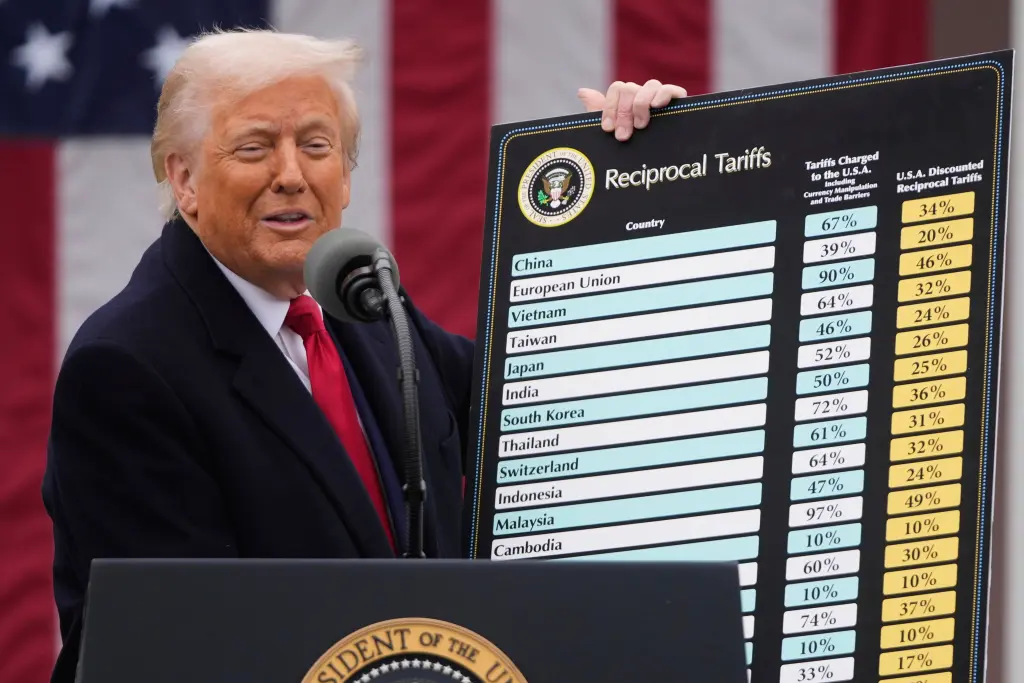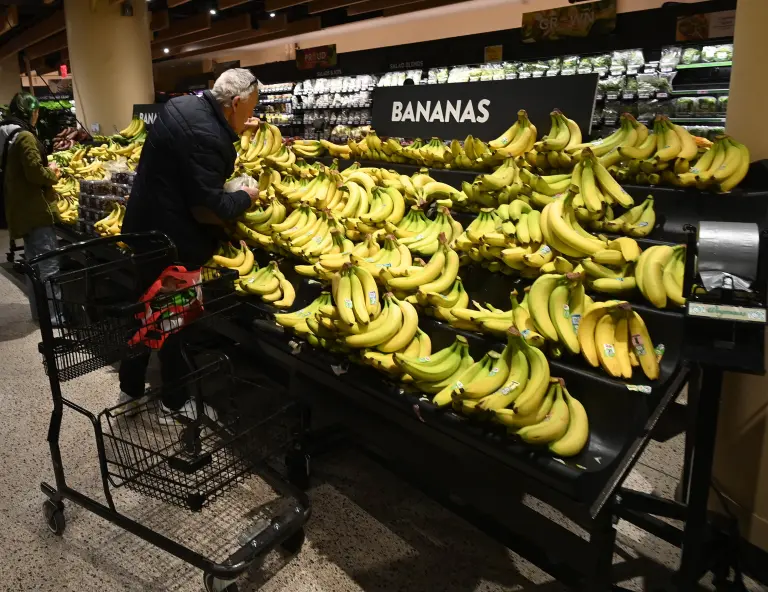Trump slashes tariffs on coffee, bananas, and key imports in an aggressive move to ease soaring grocery bills for struggling Americans
For months, grocery store aisles across the United States have become a symbol of economic strain. Shoppers linger longer over price tags, calculating what can fit into the week’s budget. Parents stand in front of produce displays, weighing whether fresh fruit can still be a daily staple. Seniors compare brands, looking for a few cents of breathing room. Coffee, bananas, everyday essentials — items that once felt reliably affordable — have slowly climbed out of reach for many families. On Thursday, the Trump administration announced a sweeping tariff rollback aimed at reversing that trend.

In a policy shift that caught both economists and consumers by surprise, the administration revealed it will eliminate tariffs on coffee, bananas, several additional food imports, and select textile products from four Latin American countries. The move, framed as a targeted effort to provide immediate relief to households squeezed by high grocery prices, signals a significant recalibration in trade strategy at a time when inflation remains one of the most pressing public concerns.
Speaking from a podium surrounded by supporters and trade officials, former President Donald Trump described the decision as part of a broader plan to “put money back into Americans’ pockets and lower costs where it matters most.” He pointed to the sticker shock facing grocery shoppers nationwide, emphasizing that essential imports like fruit and coffee should not carry added burdens that inflate retail prices.
For many Americans, the announcement struck a chord. Coffee is one of the country’s most consumed beverages, woven into daily routines from early morning commutes to late-night study sessions. Bananas remain the most purchased fruit in U.S. grocery stores, a staple in lunchboxes and kitchens across the country. Reducing the tariffs that apply to these products — tariffs that had pushed up wholesale and consumer costs — could bring immediate price relief.

Images accompanying the announcement underscored the human impact of the policy. One photo, widely circulated by news media, showed an elderly man carefully selecting bananas from an overflowing display. His posture — leaning forward intently, his cart only partially filled — captured the small, everyday decisions millions of Americans make while grappling with rising food costs. Nearby, a White House photo inset showed Trump standing at a lectern, smiling as he held up a revised tariff schedule.
The administration’s decision focuses on four Latin American countries that supply a significant portion of America’s coffee beans and tropical fruits. Officials did not release the full list, but trade sources confirm it includes major agricultural exporters whose products end up on U.S. shelves within days of harvest. By removing tariffs, the administration aims to reduce import costs for U.S. distributors, which in turn could lower prices for retailers and consumers.
Economists caution that the effect will not be instant. Supply chains take time to adjust, inventories shift slowly, and retailers typically update pricing on a weekly or biweekly cycle. But industry analysts agree the move could meaningfully cut prices on commonly purchased goods, particularly fruit, coffee, and certain textiles that have seen price spikes over the past year.
For grocery shoppers, even small reductions could bring welcome relief. A drop of 10 to 20 cents per pound on bananas, or a decrease in coffee bean prices that translates to a few dollars saved per bag, could help families stretch their budgets in ways that add up — especially over months.
In communities already feeling financial pressure, the announcement spread quickly, sparking conversations in supermarkets, local cafés, and online forums where people share tips on saving money. Food influencers, grocery bloggers, and consumer advocates began parsing through the details, offering predictions on how soon price shifts could appear on store shelves. For those who track grocery trends closely, the elimination of tariffs represents a rare piece of good news in a landscape that has, for years, been dominated by stories of rising costs and shrinking purchasing power.
Behind the scenes, administration officials framed the policy as a pragmatic response to ongoing economic frustration among voters. Grocery prices have climbed significantly in recent years due to a combination of inflation, labor shortages, global supply disruptions, and fuel costs. Food staples — items like fruit, grains, coffee, and dairy — have been particularly affected. The tariff rollback, according to insiders, was designed to target items where cost reductions could be achieved most quickly and felt most broadly.
But the announcement is not without controversy. Critics argue that the administration is selectively using tariff policy to generate favorable headlines while ignoring larger structural problems affecting food pricing. Some trade experts say rolling back tariffs on a limited number of goods does little to address broader inflation drivers, and warn that such decisions could complicate long-term trade negotiations. Others expressed concern about how tariff reductions might impact domestic producers of certain goods, though bananas and coffee — being primarily tropical imports — face little competition from U.S. agriculture.
Still, even skeptics concede that the decision may bring relief for consumers. And with grocery prices remaining one of the most visible and emotionally charged indicators of economic stability, the policy shift was immediately consequential. Families will not have to wait years to feel the impact; the effects could begin appearing on receipts within weeks.
In a nation as large and diverse as the United States, the cost of feeding a household carries tremendous weight. Parents preparing school lunches, workers grabbing morning coffee, seniors shopping on fixed incomes — these day-to-day experiences are some of the clearest windows into economic confidence. When groceries become too expensive, the strain touches every household, regardless of political perspective.
Hours after the announcement, shoppers in several major cities reacted with cautious optimism. In Chicago, one shopper said she hoped the change meant “less stress every time I come into the store.” In Atlanta, a retiree described the policy shift as “something we needed months ago, but better late than never.” In Phoenix, a father of three pointed out that small savings across dozens of weekly items could “finally start to make a difference.”
Retailers have also begun responding. Several grocery chains released brief statements indicating they would monitor cost changes and adjust pricing accordingly. Coffee roasters and importers expressed relief as well, noting that tariff-related increases had forced them to raise prices multiple times in the last year. For small businesses — neighborhood cafés, bakeries, and independent markets — even modest savings on imported goods could boost margins poisoned by months of inflation.
Trade officials emphasized that the rollback is part of a larger strategic realignment, hinting that additional tariff adjustments could follow. The administration has framed the move as an example of “flexibility in economic leadership,” a phrase that appears intended to highlight responsiveness rather than ideological consistency. Trump himself emphasized that lowering consumer costs would remain a top priority, while declining to comment on whether tariffs on other food categories could soon be revisited.
For now, at least, the focus remains on everyday staples — the items that fill morning coffee mugs, children’s snack bowls, and family grocery carts. The impact of tariff removal will be measured in pounds of bananas, bags of beans, and grocery totals that land a little lower at checkout. It will be measured in the relief of shoppers who have grown accustomed to budgetary anxiety with every trip to the store.
Grocery aisles are where families feel economic policy most directly. And in a year defined by uncertainty — from global instability to domestic political tension — this one policy decision offered something rare: an immediate and concrete benefit for millions of households.
As the news continues to spread, families across the country are paying attention, watching for price shifts and hoping for more. But for now, the policy stands as a reminder that even in the midst of political battles and economic complexity, small changes in trade decisions can ripple outward into big changes at home.
And in supermarket produce aisles — where a simple bunch of bananas has recently come to represent much more than a fruit — the impact may be felt more quickly than anyone expected.



